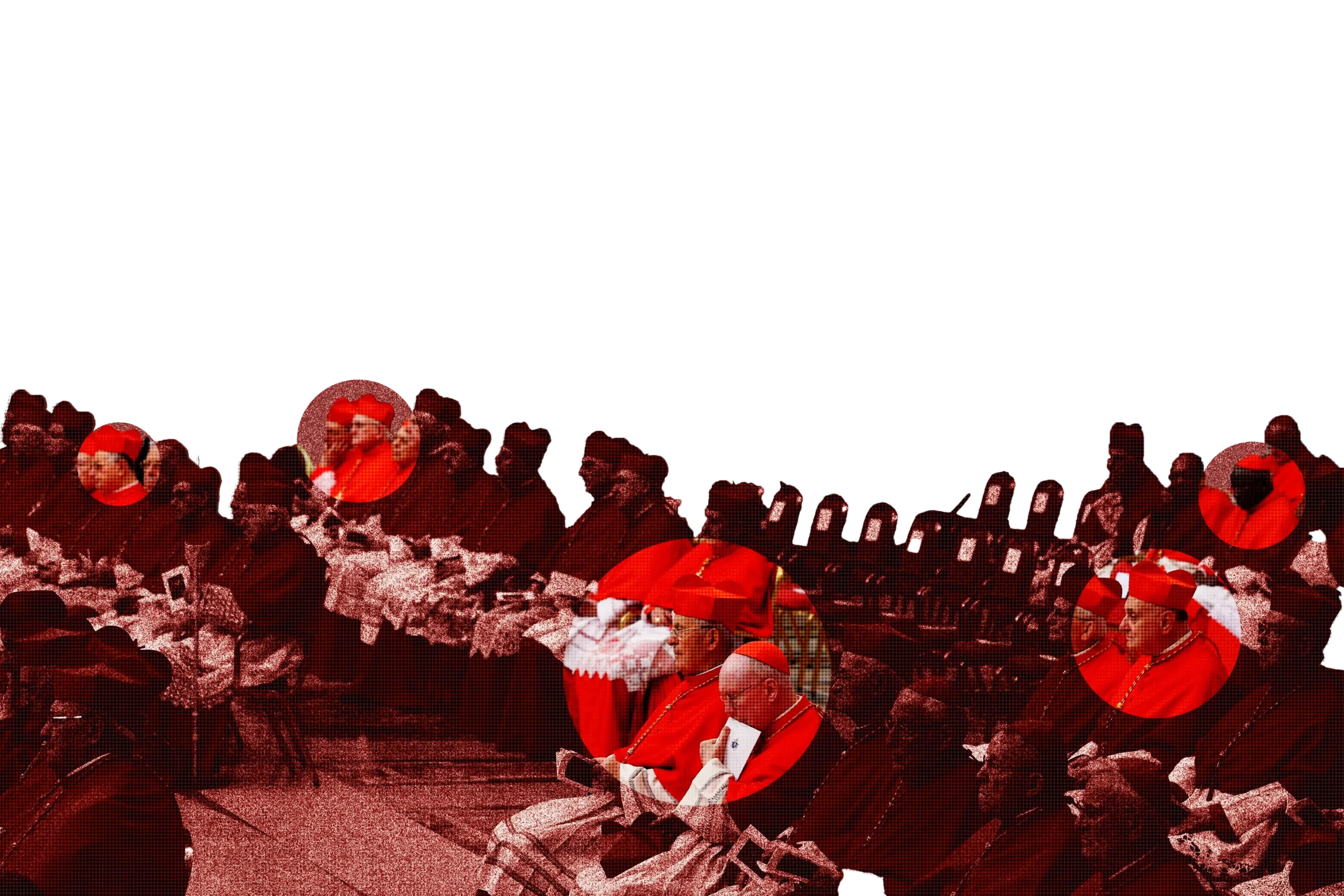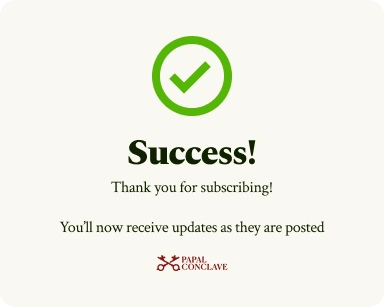Understanding Papal Authority and Infallibility
The extent of the pope’s authority is a common question for those unfamiliar with the Catholic Church and even for Catholics trying to understand what they are actually bound to believe. When people hear that the pope is “infallible,” they often assume that everything he says must be unquestionably true, or that Catholics are obligated to agree with him no matter what. But the reality is more nuanced. In this explainer, we’re going to dive into papal authority: what it is, and what it is not.
To understand how papal authority works, it helps to first understand the broader structure of leadership in the Catholic Church. The pope is not a cult dictator, nor is he a mystical voice who creates doctrine out of thin air. His role is rooted in the office of Saint Peter, who was instituted by Jesus as the leader of the apostles in Matthew 16:19. Christ appointed Peter to be the visible head of his Church on Earth. The pope, as Peter’s successor, serves as a central figure of unity and a guardian of Church teaching, the “deposit of faith.”
The pope’s authority is part of the Magisterium, which is the teaching authority of the Church. This includes the pope and all of the bishops in union with him around the world. The Magisterium interprets both Scripture and Tradition, and it helps guide the Church in matters of faith and morals.
It is within this structure that the dogma of papal infallibility comes into play. The term “infallibility” causes a lot of confusion. Many people assume it means the pope is always right, or that he is incapable of sin or error. That is not what the Church teaches.
Papal infallibility is only active within a specific and limited context. It was formally defined by the First Vatican Council in 1870, though the idea had existed in the Church’s understanding for centuries. According to the definition, the pope is considered infallible when he speaks ex cathedra, a Latin phrase that means “from the chair” of Peter. This refers to a very particular kind of teaching. For a papal statement to be considered infallible, it must meet four criteria:
- The pope must be speaking in his official capacity as the successor of Peter.
- He must be addressing the entire Church, not just a local group or audience.
- The subject must concern faith or morals.
- He must clearly intend to define a doctrine as something that must be held as true by all Catholics.
In other words, infallibility applies only when the pope is solemnly declaring a matter of faith or morals to be a definitive teaching of the Church. This does not apply to interviews, personal writings, offhand comments, or even most homilies or speeches. The pope, like any other person, is capable of sin and error.
Papal infallibility has been used explicitly only a few times in the Church’s history. One of the most well-known examples occurred in 1950, when Pope Pius XII declared the Assumption of Mary. This is the belief that Mary was taken body and soul into heaven at the end of her earthly life. Another instance was in 1854, before the doctrine was formally defined, when Pope Pius IX proclaimed the Immaculate Conception of Mary.
These declarations were made with the intent to define and clarify doctrines that were already widely held within the Church. They were not innovations or new revelations. Instead, they were affirmations of long-standing beliefs.
Not everything the pope says falls under the category of infallibility. There is a spectrum of authority when it comes to papal statements. Some teachings are considered definitive and binding, while others are open to respectful debate or development over time.
For example, when the pope speaks out on social or political issues like economics, climate change or immigration, he is offering guidance rooted in the Church’s moral framework. These are to be taken seriously, but they are not considered infallible dogmas. Catholics are encouraged to form their consciences, reflect on Church teaching and respond thoughtfully. Disagreement does not automatically place someone outside the Church.
However, on matters that have been definitively taught by the Magisterium, such as the belief in the Trinity, the real presence of Christ in the Eucharist or the sanctity of human life, Magisterial authority is binding. Catholics are expected to give “religious assent” to these truths.
The pope is not above the Church or its Tradition. He is bound by the same Scriptures and teachings as every other Catholic. His role is to preserve the faith, not reinvent it. The pope is more of a steward than a ruler. He serves the unity and continuity of the Church’s teaching, helping to clarify and defend it, not change it according to personal preference.
So, do Catholics have to do whatever the pope says? The definitive answer is not exactly. The pope’s authority is real and meaningful, but it is not unlimited or arbitrary. Catholics are not expected to treat every word from the pope as infallible truth. Instead, they are called to understand the context, the weight of the teaching and the guidance of the Holy Spirit through the Church’s tradition.
Papal infallibility is not about making the pope into a flawless oracle. It is about preserving the truth of the faith across generations. When exercised properly and rarely, it is meant to protect essential teachings, not to micromanage the lives of the faithful.






Do I Have to Do Whatever the Pope Says?
by
Ryan Hunneshagen
Share this post
Understanding Papal Authority and Infallibility
The extent of the pope’s authority is a common question for those unfamiliar with the Catholic Church and even for Catholics trying to understand what they are actually bound to believe. When people hear that the pope is “infallible,” they often assume that everything he says must be unquestionably true, or that Catholics are obligated to agree with him no matter what. But the reality is more nuanced. In this explainer, we’re going to dive into papal authority: what it is, and what it is not.
To understand how papal authority works, it helps to first understand the broader structure of leadership in the Catholic Church. The pope is not a cult dictator, nor is he a mystical voice who creates doctrine out of thin air. His role is rooted in the office of Saint Peter, who was instituted by Jesus as the leader of the apostles in Matthew 16:19. Christ appointed Peter to be the visible head of his Church on Earth. The pope, as Peter’s successor, serves as a central figure of unity and a guardian of Church teaching, the “deposit of faith.”
The pope’s authority is part of the Magisterium, which is the teaching authority of the Church. This includes the pope and all of the bishops in union with him around the world. The Magisterium interprets both Scripture and Tradition, and it helps guide the Church in matters of faith and morals.
It is within this structure that the dogma of papal infallibility comes into play. The term “infallibility” causes a lot of confusion. Many people assume it means the pope is always right, or that he is incapable of sin or error. That is not what the Church teaches.
Papal infallibility is only active within a specific and limited context. It was formally defined by the First Vatican Council in 1870, though the idea had existed in the Church’s understanding for centuries. According to the definition, the pope is considered infallible when he speaks ex cathedra, a Latin phrase that means “from the chair” of Peter. This refers to a very particular kind of teaching. For a papal statement to be considered infallible, it must meet four criteria:
In other words, infallibility applies only when the pope is solemnly declaring a matter of faith or morals to be a definitive teaching of the Church. This does not apply to interviews, personal writings, offhand comments, or even most homilies or speeches. The pope, like any other person, is capable of sin and error.
Papal infallibility has been used explicitly only a few times in the Church’s history. One of the most well-known examples occurred in 1950, when Pope Pius XII declared the Assumption of Mary. This is the belief that Mary was taken body and soul into heaven at the end of her earthly life. Another instance was in 1854, before the doctrine was formally defined, when Pope Pius IX proclaimed the Immaculate Conception of Mary.
These declarations were made with the intent to define and clarify doctrines that were already widely held within the Church. They were not innovations or new revelations. Instead, they were affirmations of long-standing beliefs.
Not everything the pope says falls under the category of infallibility. There is a spectrum of authority when it comes to papal statements. Some teachings are considered definitive and binding, while others are open to respectful debate or development over time.
For example, when the pope speaks out on social or political issues like economics, climate change or immigration, he is offering guidance rooted in the Church’s moral framework. These are to be taken seriously, but they are not considered infallible dogmas. Catholics are encouraged to form their consciences, reflect on Church teaching and respond thoughtfully. Disagreement does not automatically place someone outside the Church.
However, on matters that have been definitively taught by the Magisterium, such as the belief in the Trinity, the real presence of Christ in the Eucharist or the sanctity of human life, Magisterial authority is binding. Catholics are expected to give “religious assent” to these truths.
The pope is not above the Church or its Tradition. He is bound by the same Scriptures and teachings as every other Catholic. His role is to preserve the faith, not reinvent it. The pope is more of a steward than a ruler. He serves the unity and continuity of the Church’s teaching, helping to clarify and defend it, not change it according to personal preference.
So, do Catholics have to do whatever the pope says? The definitive answer is not exactly. The pope’s authority is real and meaningful, but it is not unlimited or arbitrary. Catholics are not expected to treat every word from the pope as infallible truth. Instead, they are called to understand the context, the weight of the teaching and the guidance of the Holy Spirit through the Church’s tradition.
Papal infallibility is not about making the pope into a flawless oracle. It is about preserving the truth of the faith across generations. When exercised properly and rarely, it is meant to protect essential teachings, not to micromanage the lives of the faithful.
by
Ryan Hunneshagen
Share this post
Related posts
The Calm Before the Conclave
How the Pope Gets Elected
What does it mean that the Pope is the “Vicar of Christ”?
SmokeWatch
Be the first to know when the new Pope is elected
SmokeWatch features live e-mail updates on all things happening with the conclave. When the smoke rises, you’ll be the first to know!